The 1944-45 Raids at Gravenhorst
The Düker (aqueduct) which allowed the Hörsteler Aa to flow under the Mittelland Canal near Gravenhorst was a very small target to hit.
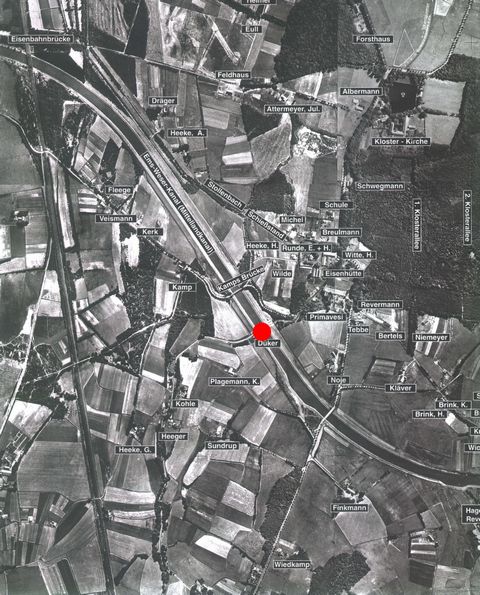
The red dot on the aerial photograph shows how small it would have appeared to the RAF crews.
The top of this image is orientated to the East.
On the 6/7 November 1944 235 Lancasters and 7 Mosquitoes of 5 Group attempted to attack the Mittelland Canal where it crossed the River Aa. The marker force experienced great difficulty in finding the target except for the unfortunate F/Lt De Vigne. He dropped his marker with such accuracy that it fell into the canal and was extinguished.
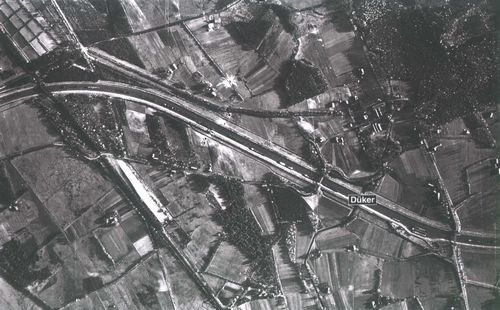
After 31 aircraft had bombed, the raid was abandoned. 10 Lancasters were lost in this raid which is not mentioned in German accounts of attacks on the Mittelland. During this raid nightfighters were seen to be active in the target area and four Lancasters were observed being shot down.
The first serious raid was made on the 21st November when the canal was attacked by 138 Lancasters and 6 Mosquitoes. The canal was breached and a 30 mile stretch drained of water stranding 60 barges. Two Lancasters (both from 49Sqn) were lost in this operation.
It is speculated that one of these two aircraft exploded after being hit by bombs which in turn caused the other aircraft nearby, to also explode.
Click this link to learn more about these Lancasters and the 70th anniversary commemorations.
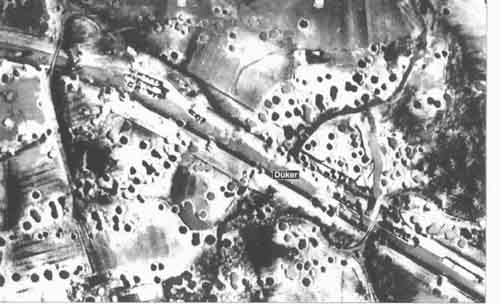
One of the two Lancasters lost was piloted by Group Captain "Ginger" Weir, Fulbeck's irrepressible Station Commander. The only survivor was G/C Weir who remembers gaining consciousness laying on his back on the muddy bottom of the breached and drained canal. He spent the rest of the war as a POW.
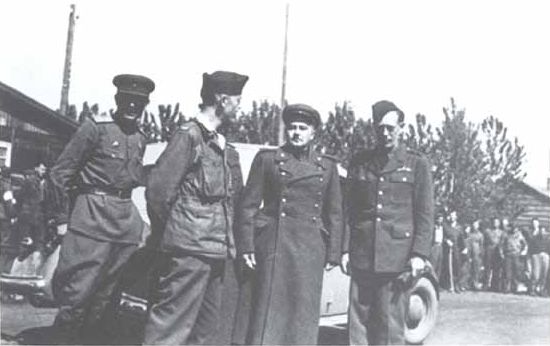
Group Captain Weir (RHS) photographed with the Russian liberators at Stalag Luft 1 in May 1945
After huge efforts by forced labourers and prisoners of war the canal was once more navigable. The second major raid took place during daylight hours on New Years Day 1945. During this raid the canal was badly damaged with over half a mile of banking pitted with bomb craters. 152 Lancasters and 5 Mosquitoes took part in the raid with no losses.
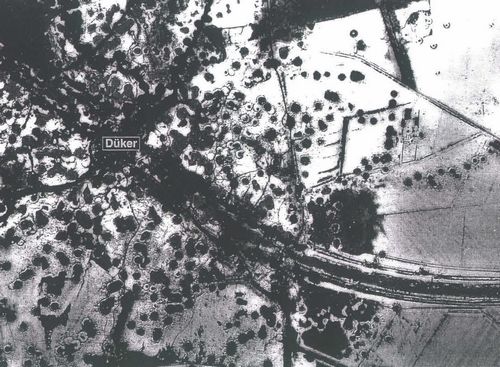
The results of the New Year raid.
This is an extract from the logbook of P/O Alexander Elgar Peace Sinclair who was a navigator with 44 Rhodesia Squadron. It shows that he was a part of the 5 Group raid planned for the 20th February 1945. This attack (154 Lancasters and 11 Mosquitoes) was abandoned by the Master Bomber as the area was completely covered by cloud.
All the aircraft returned safely.
They returned, for a successful attack, two days later on 22nd February (see below).
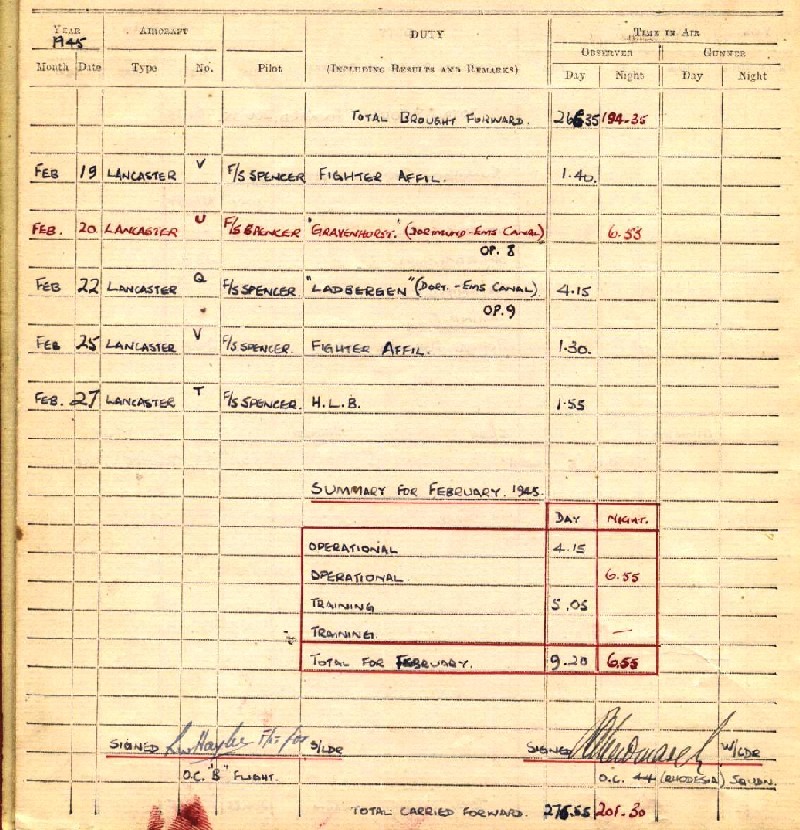
Feverish efforts were made once more to make this vital route navigable. All their efforts were in vain when the third raid on 21/22 February 1945 by 165 Lancasters and 12 Mosquitoes completely obliterated the banks and rendered the canal 100% unserviceable.
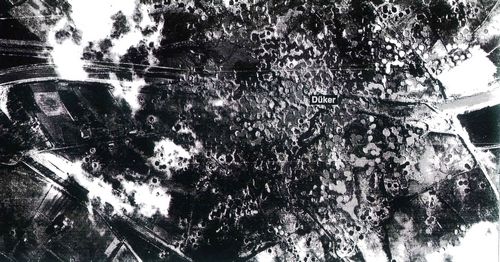
The results of the February raids
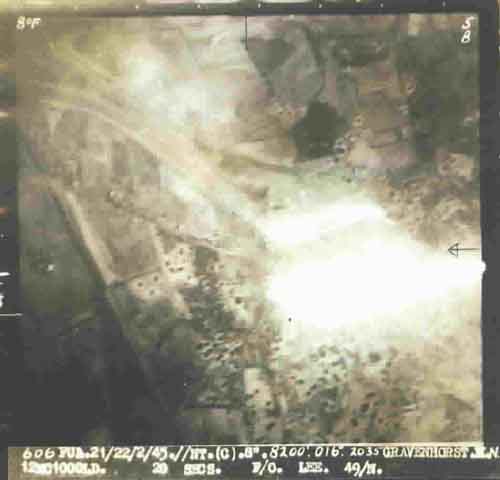
This is the bombing photograph taken from a Lancaster flown by Flying Officer Lee during the February raid. The details of the photograph can be seen at the bottom of the picture. The bomb aimer, John Aldridge remembers these raids vividly but found them, from a personal point of view, relatively uneventful.
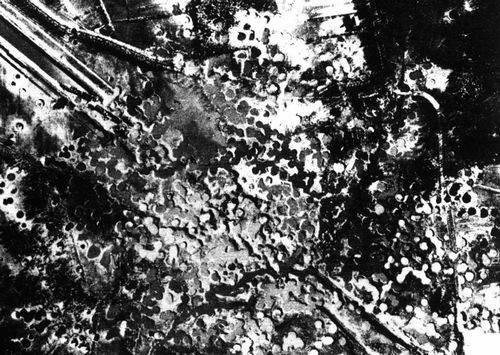
The line of the canal can just be made out crossing from top left to bottom right.
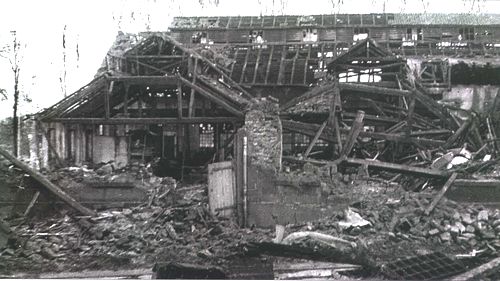
During the raids the Friedrich-Wilhelms foundry situated a few hundred metres from the aiming point was hit and badly damaged.
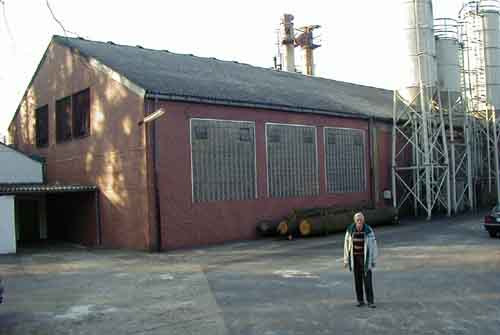
The same location today with local historian Hermann Döbber standing in the foreground. Herr Döbber's father worked in the foundry for many years. Today the foundry casts specialist mouldings for customers from all over Europe.
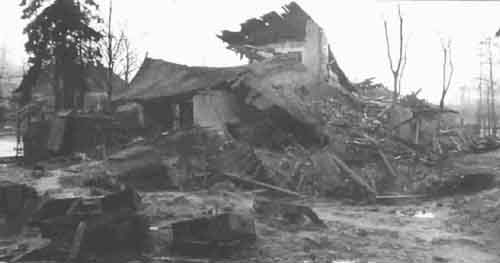
Buildings to the rear of the foundry were also damaged. The picture shows the remains of the enamelling works and restrooms.A little closer to the canal were several family houses. These were extensively damaged although there was no loss of life.
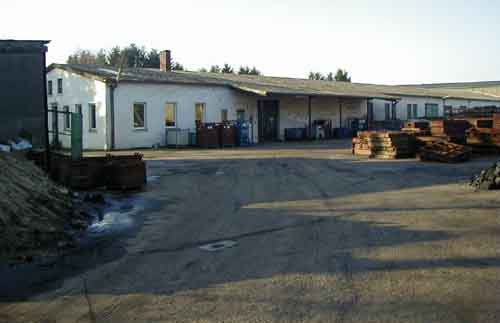
The same location today shows no evidence of the damage of 1944/45.